Ata-ul-Haye Nasir, Ahmadiyya Archive & Research Centre
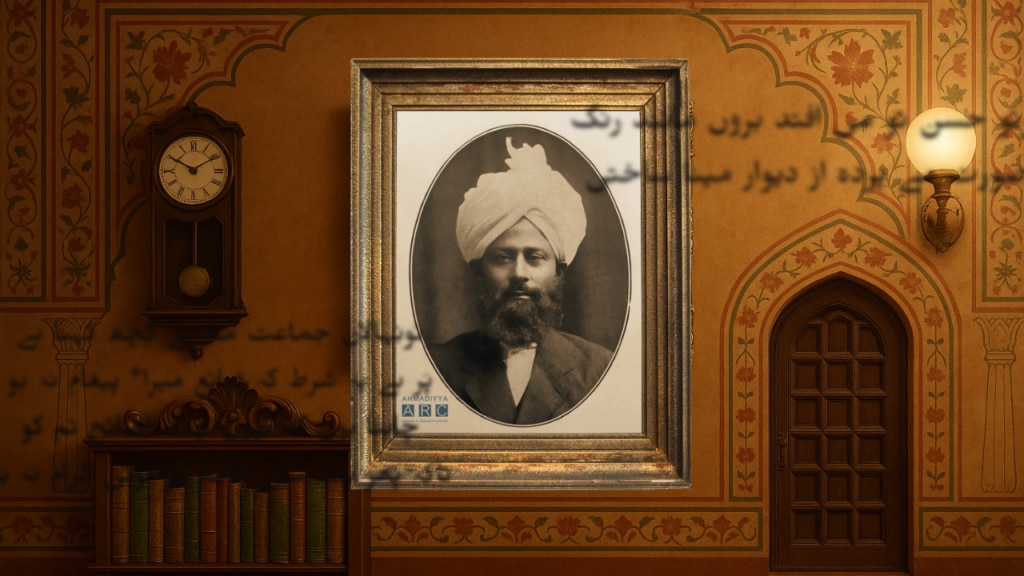
During his Friday Sermon on 21 February 2025, Hazrat Khalifatul Masih Vaa encouraged Ahmadis to make an effort to study the vast treasure of knowledge found in Hazrat Musleh-e-Maud’sra literature. Huzooraa highlighted the fact that his literature was not limited to the religious spheres, but rather, touched upon various secular topics as well.
In addition to the Jamaat periodicals, Hazrat Musleh-e-Maud’sra articles and speeches would also get published in various other Muslim periodicals of British India.
This article endeavours to narrate some details and background of Hazrat Musleh-e-Maud’sra articles that were published in a Lahore based magazine, ادبی دنیا (Adabi Dunya) in 1930-31 – along with scans of those particular issues of the said magazine. In the editorial note on one of these articles, the editor of Adabi Dunya wrote that Hazrat Mirza Ghulam Ahmad’sas books are “a treasure trove of Urdu literature” and according to the Arabic phrase that “the son is a reflection of his father”, Hazrat Mirza Bashir-ud-Din Mahmud Ahmadra also had “a passion for the Urdu language.” More details about this editorial note will be narrated later in this article.
1929: The launch of Adabi Dunya

In 1929, the Adabi Dunya was launched by Ehsanullah Khan Tajwar Najeebabadi (1894-1951) – a poet, journalist and educationist. He went to the Dar-ul-Uloom Deoband and completed his education on the pattern of Dars-e-Nizami – a study curriculum or system used in many Islamic institutions. After graduating from the Punjab University, he taught Persian and Urdu at the Dyal Singh College, Lahore.
Upon the launch of this magazine, The Civil and Military Gazette of 11 April 1929 reported, “A monthly Urdu paper edited by Maulana Tajwar, a well-known poet and scholar, which has as its object the creation of a vehicle of literary expression for India and the improvement of Urdu has been published in Lahore. The paper is owned by a company of which Sir Abdul Qadir is director.”
1930-31: Hazrat Musleh-e-Maud’sra articles in Adabi Dunya
In March 1930, this magazine published an article, titled “Hali ki Tanqid-Nigaari”, (lit., “Critique by [Altaf Hussain] Hali”), by Professor Bhopal Singh M.A., Senior Professor of English at the Dyal Singh College. Hazrat Musleh-e-Maudra read this article with keen interest and was prompted to write a response.
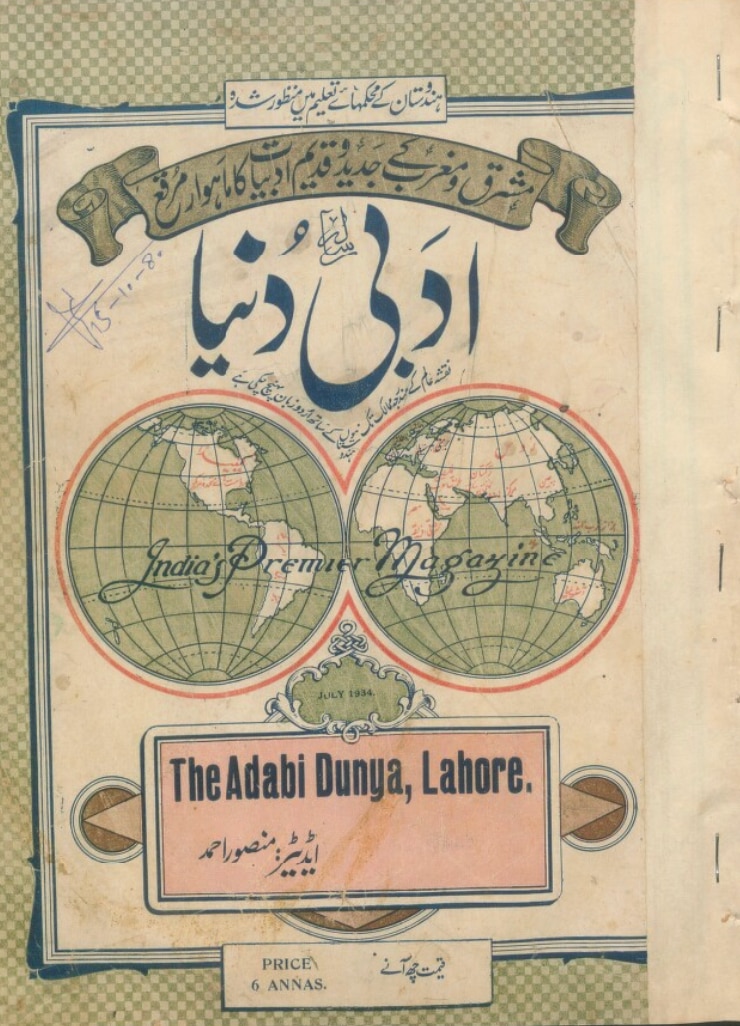
In the beginning of his response, Huzoorra stated:
“How good it feels to read an article about a branch of Urdu literature, written by a professor, and that too of English! I read this article with great interest and while reading it, my thoughts wandered from one place to another until I felt a need to express my thoughts about شعر [poetry or verse].” (Adabi Dunya, Vol. 2, No. 5, p. 338)
Huzoorra wrote this article with the pen name ابن الفارس (Ibn al-Faaris) and while highlighting the essence of poetry, he provided a moderate definition of a poetic couplet, in light of the Eastern and Western thoughts. Shedding light on the Western ideas about poetry, he mentioned well known English poets, William Wordsworth and Matthew Arnold, and a German philosopher, GWF Hegel.
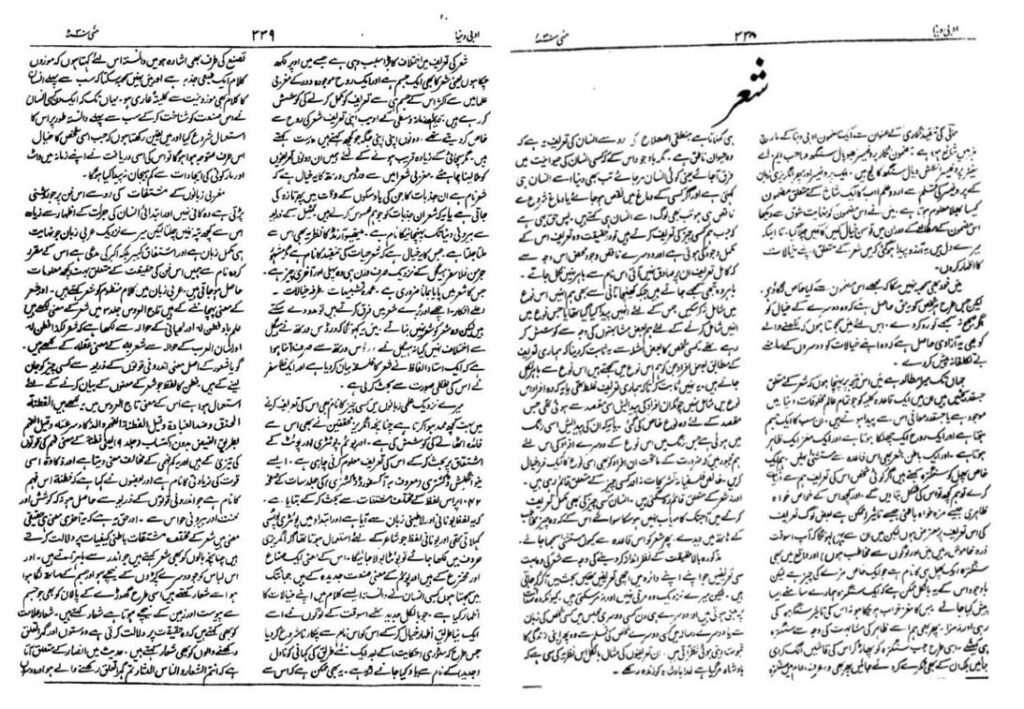
Thereafter, Huzoorra stated that a poetic couplet can be defined as the words that are used “to express the inner feelings of our hearts that evoke some of our emotions in such a manner that, while being detached from the actual words, we become fully aware of all the minute details of their meanings and feel them too, as if it were a plectrum that creates vibrations in an instrument.” (Ibid., p. 340)
In this same issue, the editor wrote the following note about this article:
“The Adabi Dunya could not resist from catching the attention of a well-known religious leader of the country – despite his sacred engagements – whose spiritual greatness is established upon the hearts of his hundreds of thousands followers,” and “who deems his assigned duty to be the preaching of Allah’s commandments and religious guidance from his mantle of Khilafat. The highly precious article which is being published in this issue, with the name ‘Ibn al-Faaris’, is a result of the flow of his blessed pen.” (Ibid., p. 323)
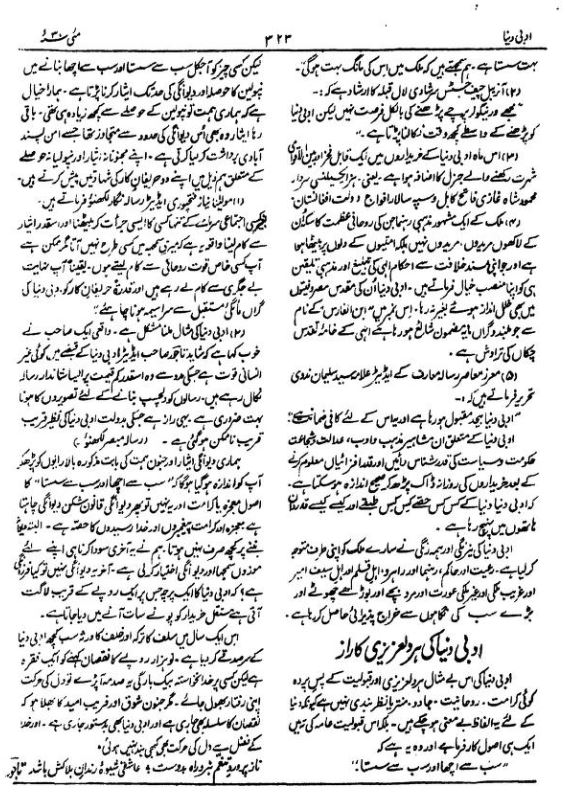
He further wrote:
“The above article is a reflection of the heart and mind of a person who in fact rules the hearts of hundreds of thousands of people. What greater proof can there be of the growing popularity of the Adabi Dunya than the fact that such distinguished people are cultivating it with their generous contributions. The distinguished author did not allow us to reveal the subtle and delicate veil of ‘Ibn al-Faaris,’ however, we can say in the words of Allama Iqbal:
پرتو حسن تو می افتد بروں مانند رنگ
صورت مے پردہ از دیوار مینا ساختی
“[The radiance of your beauty shines out of the glass like the colour. You have made the appearance of wine stand out from the wall of the glass.]” (Ibid., p. 341)
In January 1931, the same magazine published an article, titled “Mann ki Maahiyyat” (lit., “Reality of the Mann – edible substance bestowed upon the Israelites”), by Professor Naeem-ur-Rahman M.A. of Allahabad University.
In response, Hazrat Musleh-e-Maudra wrote an article entitled “Mann ki Haqiqat” (lit., “Reality of the Mann”). The article was written with the pen name “Ibn al-Faaris” and began as follows:
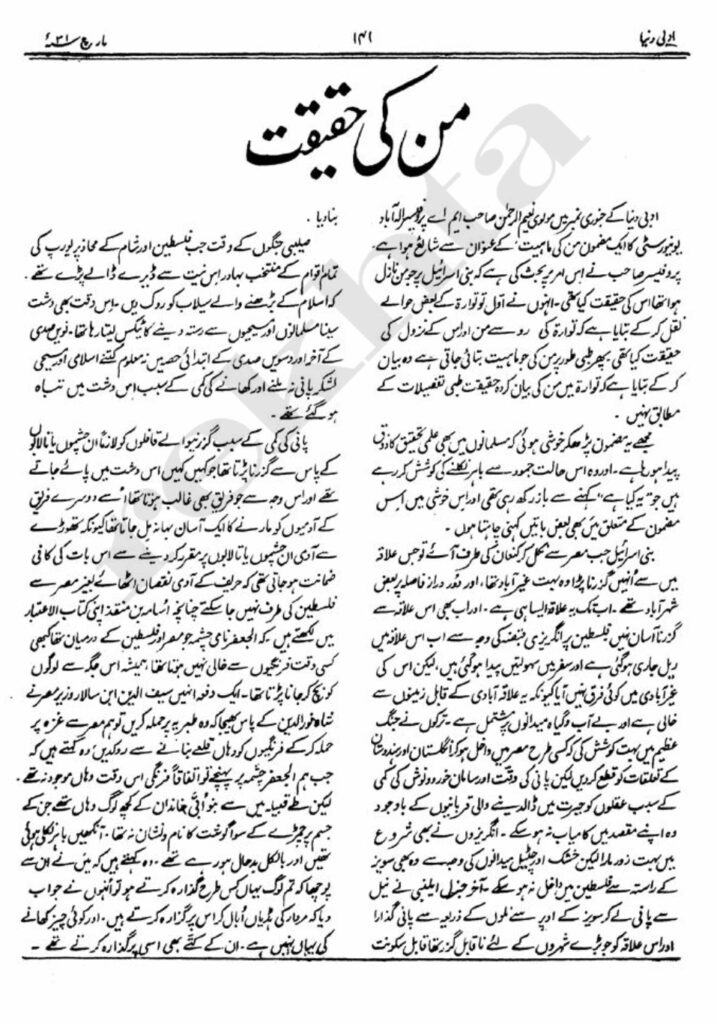
“I am pleased to read this article [as it shows] that the zeal for academic research is arousing among the Muslims as well and they are trying to get out of the stagnant state which was stopping them from contemplating: ‘What is this?’ And in this state of happiness, I too wish to express some points in relation to this article.” (Adabi Dunya, Vol. 4, No. 3, p. 141)
The editor wrote a note about this article and stated:
“‘Mann ki Haqiqat’: The first interesting article on this subject, by Maulana Naeem-ur-Rahman Sahib M.A., Lecturer Allahabad University, has already been published. Upon reading it, a comprehensive article has been sent to us by a well-reputed religious leader from a very well-known religious organisation – who is the leader of around 500,000 Muslims. This research article is a further elaboration of the first article. We are thankful to Maulana Naeem-ur-Rahman Sahib that his narration of the true facts [haqiqat-nigaari] has prompted a noble religious leader to write a precious article.” (Ibid., p. 133)
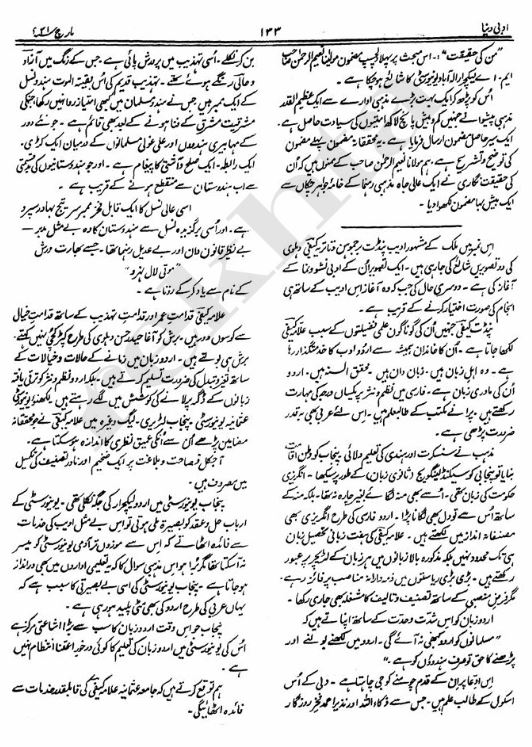
In the same issue, another article of Hazrat Musleh-e-Maudra was published, with the name “Mirza Mahmud Ahmad (Qadian)”, titled “Urdu Rasaa’il Zubaan ki kis tarah Khidmat kar sakte hain?” (lit., “How can Urdu magazines serve the language?”).
In this article, Hazrat Musleh-e-Maudra outlined valuable suggestions and guidance as to how Urdu magazines could help the flourishing of the Urdu language. Huzoorra stated that Urdu was facing difficulties more than any other language, “however, in my view, they are not such that cannot be eradicated. The shortcoming by now has been that the problem has not been identified, and obviously, for this same reason, no suitable remedy has been adopted.” (Ibid., p. 186)
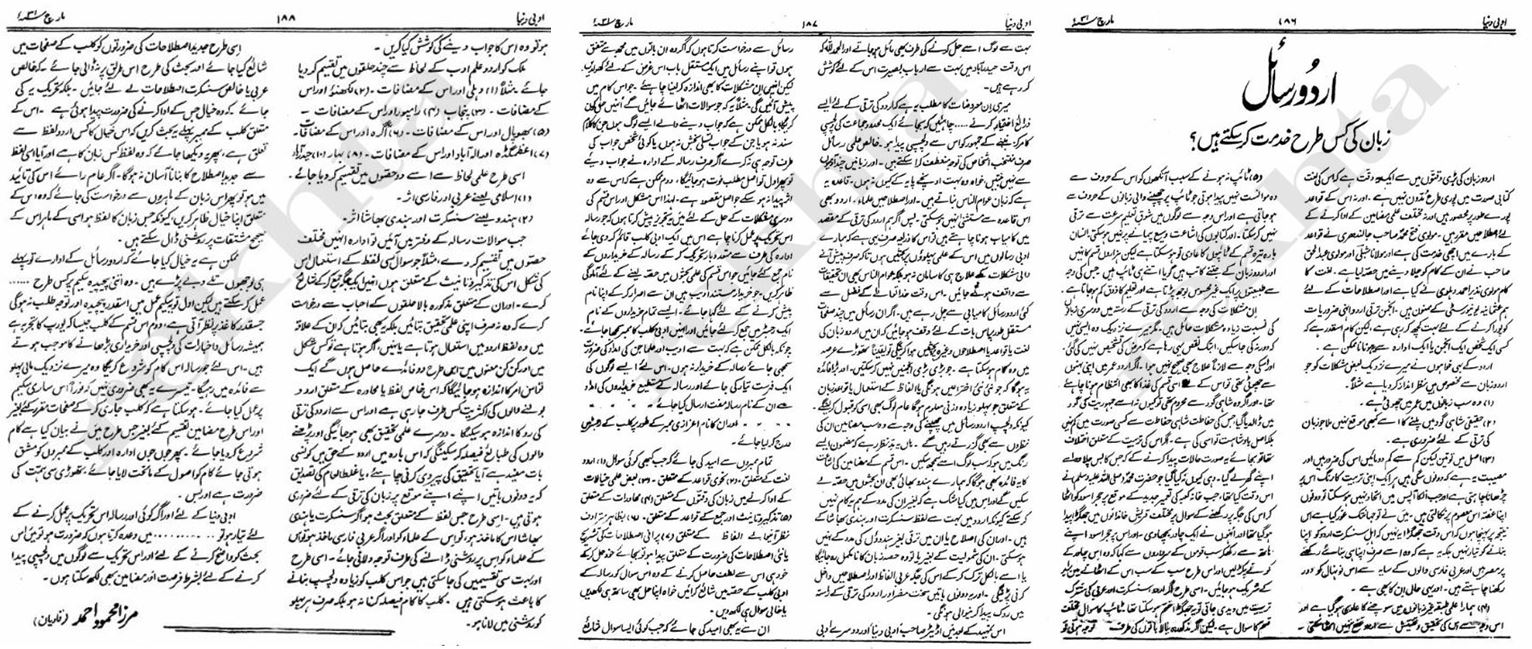
The editor commended this article in his following note:
“I am extremely grateful to Hazrat Mirza Bashir-ud-Din Mahmud Ahmad Sahib, Imam Jamaat-e-Ahmadiyya Qadian for his practical assistance amid the difficulties faced by the Adabi Dunya. I have neither requested any assistance from him nor do I have the honour of being an Ahmadi, nor is the Adabi Dunya a religious magazine. However, Hazrat Mirza Sahib takes out time from his immense engagements to pay attention to Ilm-o-Adab [knowledge and literature] and its servants.
“This care shown by the aforementioned distinguished person for the country’s language and literature is noteworthy for those scholars who consider the service of Urdu literature a waste of time. After hearing about the financial difficulties of the Adabi Dunya, he provided a few subscribers and also gave a suggestion which I present in his own words:
“‘I see no problem if you appoint a certain number of helpers and assign to them some amount. After all, you will take this money for the service of literature and not for yourself. If this suggestion is agreeable, I am ready to participate with pleasure.’
“While respecting the kindness and sympathy of respected ‘Mian Sahib’, I am unable to give this suggestion a practical form. My nature is hesitant from acting upon such suggestions” and “I only wish to request him for prayers.” (Ibid., pp. 131-132)
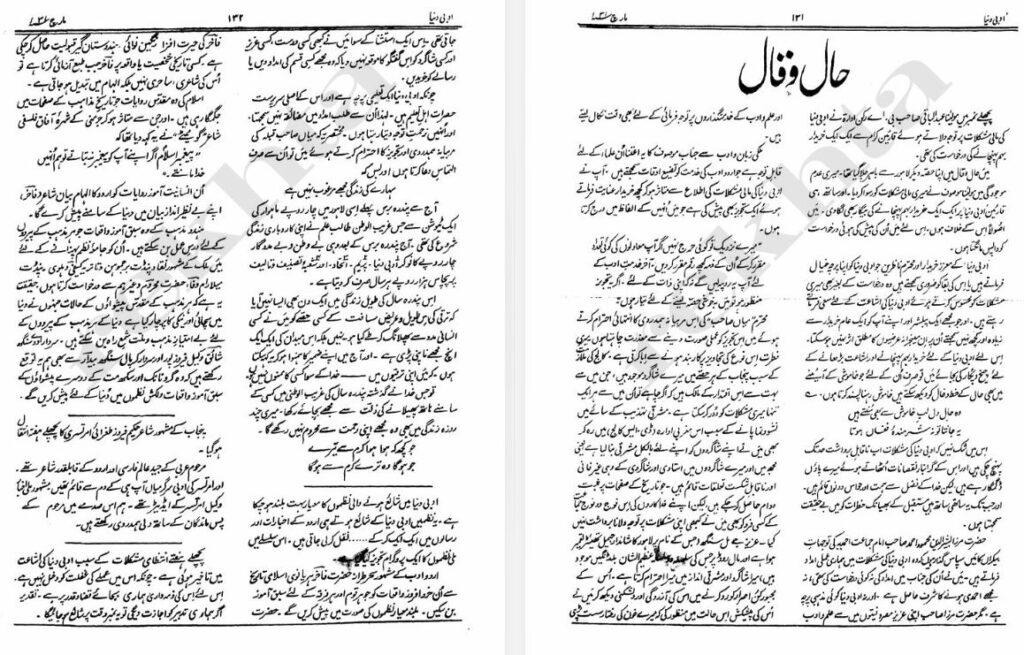
The editor wrote another note in the next issue and stated:
“In the previous issue, you must have read [the article which manifested] the immense care shown by Hazrat Imam Jamaat-e-Ahmadiyya Qadian. Imam Jamaat-e-Ahmadiyya is the noble son of Mirza Ghulam Ahmad Sahib – the Promised Messiah – and his Khalifa. The works of the late Mirza Sahib are a treasure trove of Urdu literature. According to الولد سرّ لابیہ [the son is a reflection of his father], his illustrious son also has a passion for the Urdu language and affinity for its servants.” (Ibid., No. 4, pp. 199-200)
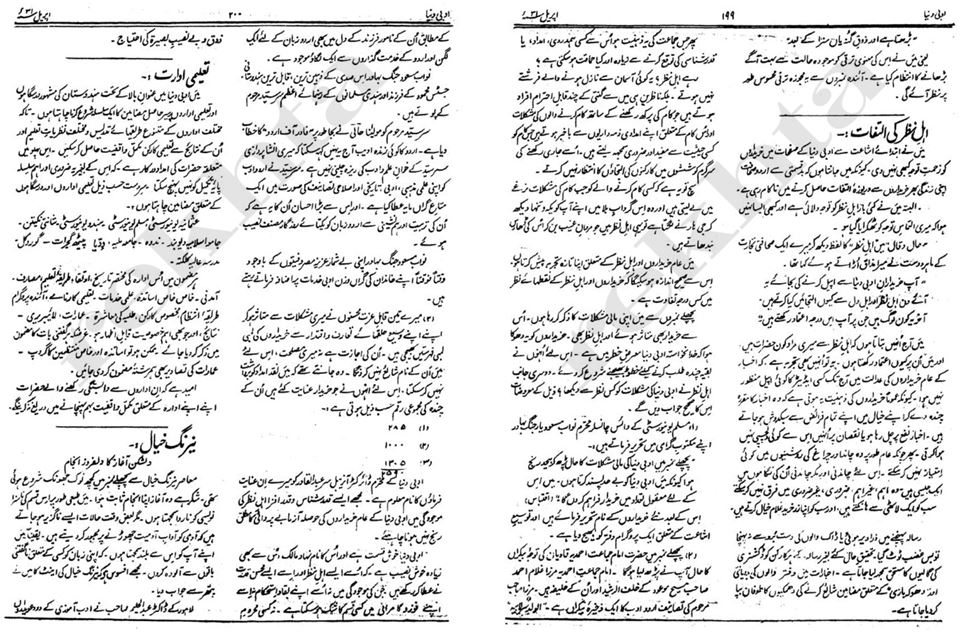
While the above-mentioned details highlight the fact that Hazrat Musleh-e-Maud’sra articles were highly commended, we also learn that he had a great passion for the Urdu language’s prosperity and was a keen reader of Urdu periodicals as well.

